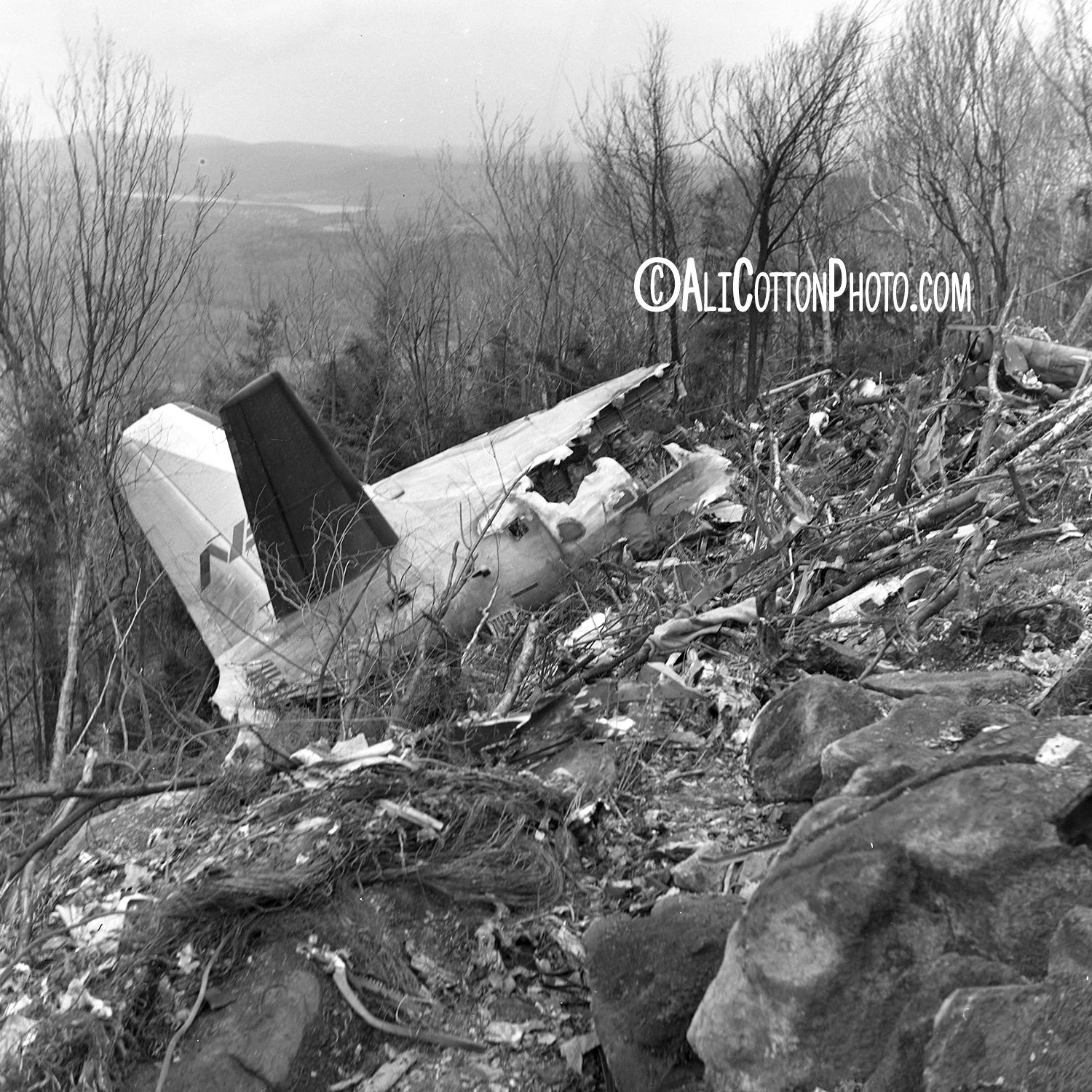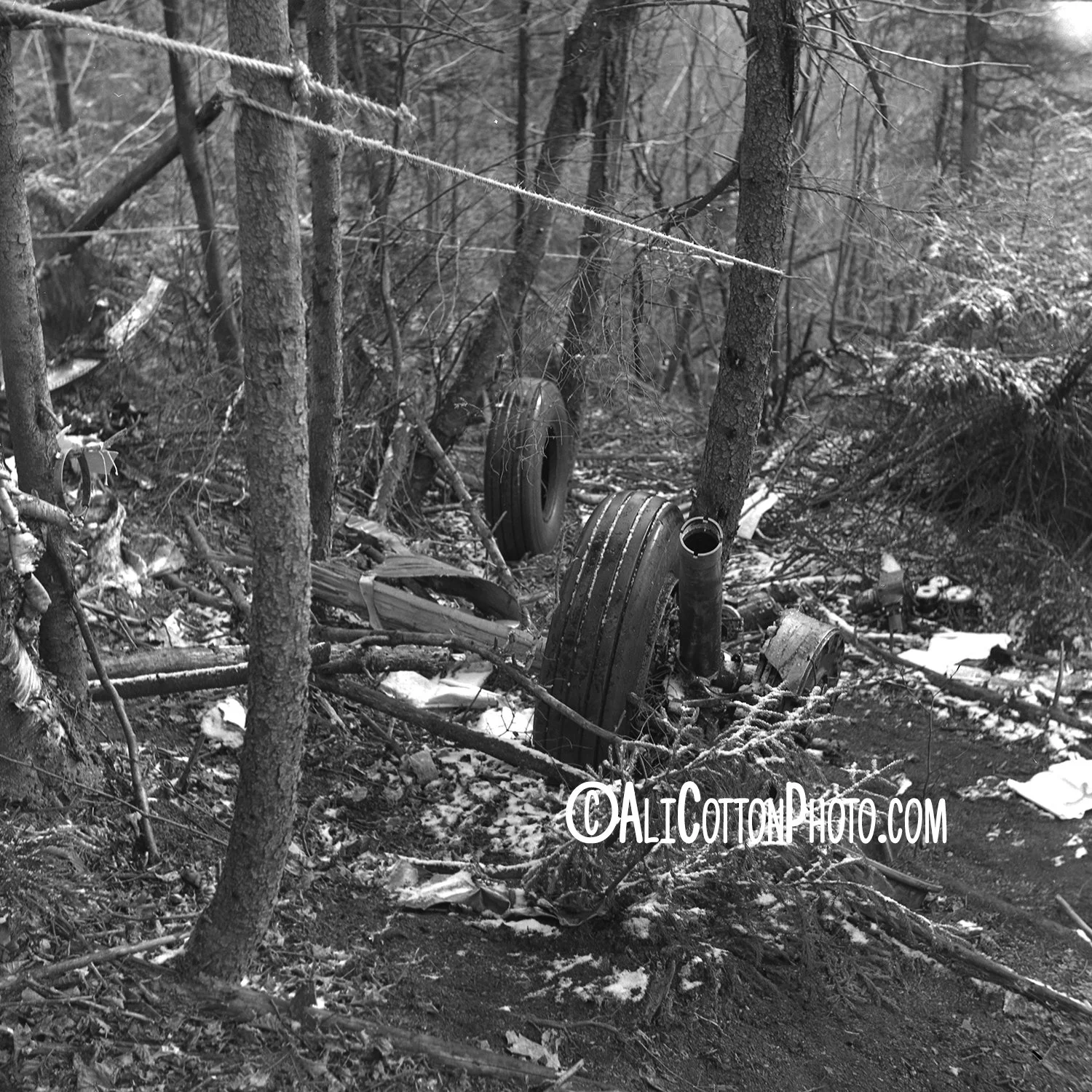When I was a teen, I must have asked my dad what one of his worst times at the police department was. He told me that he had to spend the night by himself up on the side of Moose Mountain. He guarded the wreckage of an airplane overnight until crews could come at sunrise.
He said something that still haunts me. He told me that there were bodies up there, and at one point, in the cold and dark, they moved. It was rigor mortis setting in. He specifically said that one deceased person sat up. I am not a forensic pathologist…so I do not know if his mind exaggerated, under the circumstance, as he was in his early 20s, new on the force, and alone on a mountain in the dark after a horrific event.
My dad was also the police dept photographer. He had his medium format camera on him to photograph crime scenes and accidents. I never thought I would see the negatives he took…but guess what I found today….
These negatives have been in a box I shipped back from NH after his death. I finally went through this box, and saw an envelope in his handwriting that said NE Air Crash. I immediately pulled out my scanner and scanned them. (beats doing my quarterly sales tax I was supposed to be working on today.)
No dead bodies, but it was emotional looking at the wreckage. Here are three poignant images… wow. Since Dad died many years ago, I cannot ask him more about this tragedy. I wondered how I could investigate the details of these photos. Believe it or not, this is what I found on chat GTP. Check it out below. I love going through my dad and grandfathers historic images. This set of negatives brings me chills as I time travel 57 years ago to this tragic event.
My dad was not mentioned in any of the coverage, but when I read “Darkness delayed rescue efforts significantly”…I know it was my dad who stayed with the plane until recovery could resume at daylight.
If you are reading this and you have interest in sharing info or retrieving prints from me…please message me here. I guess I missed the 50th anniversary of this sad event a few years ago to share these images. But, here are some details that I found…
Northeast Airlines Flight 946, which crashed into Moose Mountain—a small, wooded mountain just northeast of Hanover, NH—on October 25, 1968 .
Crash Details
Northeast Airlines Flight 946
• Date: October 25, 1968, around 6:17 p.m. EDT
• Aircraft: Fairchild‑Hiller FH‑227C (tail number N380NE)
• Route: Boston → Lebanon, NH (stopover) → Montpelier, VT
• Location: South Peak of Moose Mountain, Etna, Town of Hanover, Grafton County, NH, about 3.8 NM northeast of the Lebanon VOR at ~2,237 ft MSL—approximately 60 ft below the summit (~2,290 ft)
Cause & Conditions
• The aircraft was descending too early during an instrument approach in dense fog and low clouds.
• Faulty VOR beacon signals and confusing instrument readings led to the crew starting descent prematurely.
• It resulted in the plane striking the treeline mid‑flight, shearing off the tail and rear fuselage. The remainder of the aircraft broke apart and ignited amid rocks and trees .
🧑✈️ Casualties and Survivors
• Total aboard: 42 (39 passengers, 3 crew)
• Fatalities: 32
• Survivors: 10 (primarily seated in the rear of the aircraft)
🏞️ Crash Site & Remains
• Located along a steep, wooded ridge roughly 45 minutes’ hike from the nearest road. Wreckage like twisted aluminum and aircraft parts remain visible near the summit of Moose Mountain’s South Peak .
⚖️ Significance
• This remains the deadliest commercial aircraft accident in New Hampshire history .
• The crash led to investigations and safety recommendations regarding VOR navigation systems and non‑standard instrument approaches in mountainous terrain .
Here’s a more detailed look at the experiences of survivors and others affected by Northeast Airlines Flight 946, which crashed on Moose Mountain near Hanover, NH on October 25, 1968.
🧑✈️ Survivors’ Experiences
“A Gentle Impact”
Survivors seated near the rear described the impact as surprisingly smooth:
“The initial impact … felt gentle and seemed no more severe than a normal touchdown … not a crash but more of a settling,” said one unnamed passenger .
Others echoed this description, calling it “not a crash, but more of a settling” or “a rough landing” .
Calvin Osha’s Story
Calvin Osha, a Texas-based insurance executive aged 41 at the time, survived largely by sitting in the rear of the aircraft. The front section exploded in flames, while the tail remained somewhat intact:
“I retrieved my glasses, and then noticed a piece of fabric burning near my feet. … The front end was destroyed—but the rear remained more or less intact.”
Osha witnessed mud inside the cabin, parts of the plane scraping, and then the fire ahead of him .
Ten survivors escaped—nine passengers and stewardess Betty Frail—all seated in the rear. They exited through the rear service door or openings in the broken fuselage. Tragically, while 17 initially escaped the fire, seven later succumbed to their injuries before rescue could arrive .
🚑 Rescue & Conditions
• Terrain & weather: The crash site sat about )57 feet below the summit of Moose Mountain (~2,237 ft MSL), in dense fog, rain, freezing temperatures, and rugged terrain. Darkness delayed rescue efforts significantly .
• Rescue efforts: Some survivors managed to walk down the mountain to get help. Others were evacuated by helicopter, with airlifting beginning at Dartmouth College Green and transport to Mary Hitchcock Hospital in Hanover .
🧠 Family Reflections & Legacy
Jeff Rapsis — Pilot’s Son
Jeff Rapsis, the son of Captain John A. “Jack” Rapsis (the pilot who perished in the crash), became a journalist and later the inaugural director of the Aviation Museum of New Hampshire. He often revisited the crash site to honor the event and advocate for aviation safety .
In October 2018, Jeff and his brothers hiked to the crash site and led a commemoration. He described a distinct ledge of red‑tinted, heat‑charred rock near the summit as “ground zero” for the impact zone. Many trees and debris from the disaster were gone, though discoloration in the bedrock remained visible to hikers .
Commemorations
On the 50th anniversary, dozens joined Jeff and others—including survivors and rescue personnel—to mark the site. Local fire department members recounted creating a makeshift landing pad on Dartmouth Green and coping with physically exhausting terrain in freezing, rainy conditions.



